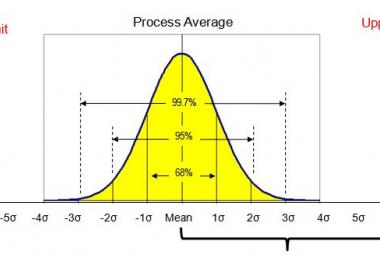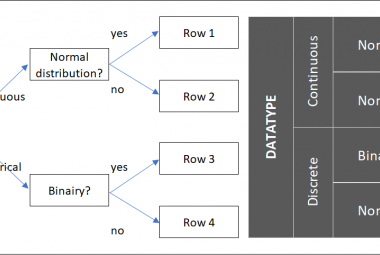In ‘the Lean Start-Up’, Eric Ries describes the challenges of starting a new business, and how the lean philosophy can help taking critical decisions faster. A central theme in this book is the build-measure-learn-cycle in which products and services are designed and improved. The shorter the cycle, the faster you learn, and the faster your service or product will become successful. This article is focused on the same cycle.
In the first chapters of the book, Ries describes THE USUAL PROBLEMS OF START-UPS. Why is starting a new company so much more difficult than working in an existing one?
The first answer to this question is, that is it still unclear who best 20% of your customers are. When the product or service is new, you do not know exactly who will benefit most from it in practice. The second answer to the question is that it is still unclear what 20% of functionality is attractive to your customers. This makes the environment of the entrepreneur very insecure.
The challenge of the start-up is to answer the above questions as quickly as possible, to be able to take decisions that are necessary to make your product or service successful. This is where the BUILD-MEASURE-LEARN CYCLE comes in (see figure 1).
Every entrepreneur starts with an idea of a product or service, with which he things he can build a successful business. This idea has to be transformed into an actual prototype of the product or service (build phase). This prototype, or maybe even more than one prototype, is than put in the market and the success of each type is measured. You should collect data on the different preferences of the customers and learn what functionality is most important. These learnings are then lead back to the beginning of the cycle, where it forms the input for product changes, which than can be build and measured again.

Figure 1: Build-measure-learn cycle from E.Ries
The BUILDING PHASE is the first phase of the cycle and in this phase, an idea is transformed into an actual product. It is important to develop a product from a vision. De vision of the organization describes the ‘why’ of the organization. What is the problem that the product or service is going to solve for future customers?
Then, the strategy follows. How can the product make sure the vision becomes reality? It is the ‘how’ of the organization. In this phase, the functionalities of the product are defined, which can actually change in time when the organization moves through different learning cycles.
After the vision and strategy are created, the first version of the product can be build. This is the ‘what’ of the organization. Just like the strategy, the product can and probably will change in the future as the organization moves through the different cycles and retrieves information from key customers about what they do and do not value.
The building phase is followed by the MEASURING PHASE. The goal of this phase is to receive data from the market as soon as possible, about how the product or service is received.
Ries describes the strategy of creating a minimal viable product (MVP). This is an easy version of the final product, that is easy to create and can be the trigger for a lot of customer feedback.
The biggest challenge is measuring the right values to be able to take decisions about the next version of the product. One type of analysis that Ries describes is the cohort analysis (see figure 2). This is a graphical visualization of the effectiveness of an online business. By choosing the right metrics, you can measure the impact of for instance a changed layout of a website.
A second example is to the possibility to do a 50/50 experiment in marketing, in which two different versions of for instance a newsletter is being send to different groups of potential customers. By measuring the data of the two different groups, the most effective layout of the newsletter can be determined. What visualization of the product got the most clicks or even sales?
To be able to measure the impact of different experiments, it is advised to do maximum 3 experiments in parallel, because it otherwise becomes too difficult to follow the improvement in sales back to one factor.

Figure 2: Example Cohort Analysis (SOURCE: The Lean Start-up – E-Ries)
The third and final phase of the learning cycle is the LEARNING PHASE. It is important to use the data that you collect in the measure phase, which means taking decisions based on that data.
Ries describes the so called pivot or persevere decision. A good entrepreneur is able to see when it is better to change the strategy of the organization when the data shows that the market is not responding well to it.
Sometimes, the same entrepreneur has to take an even worse decision: when the question whether the organization can become profitable in general has to be answered with a no.
To become profitable, the organization needs to grow and simplest way to create growth is to create repetitive sales. A way to get new customers is commercials, but more effective is mouth-to-mouth marketing, in which satisfied customers share their positive experience with your product, with their environment.
The lean start-up is a book in which learning is the central theme. THE LINK WITH THE LEAN PHILOSOPHY can be made on a couple of topics.
Shortening the lead times. The speed in which experiments are done directly influences the speed in which the product or service can be improved and the faster the product improves, the higher the change becomes of creating a product with a competitive advantage.
Listening to your customer is the foundation for learning. Ries his learning cycle is based on experiments done in the market. Therefore the improvement ideas come from the customer, not only from employees.
Finally, visual management is used to check whether experiments are successful or not. (also see the articles on obeya and the team board).
I understand why the lean start-up has become a bestseller among entrepreneurs. With simple language, the challenges of a start-up are described and the build-measure-learn-cycle provides a hands-on structure on how to gain competitive advantage and make your product or service profitable.
Continue to:
Design for operational Excellence – K.Duggan (summary)
SOURCE:
Ries, E. (2011). The Lean Start-Up - How Today´s Entrepreneurs use Continuous Improvement to Create Radically Success Businesses. New York: Crown Business. (order this book)












